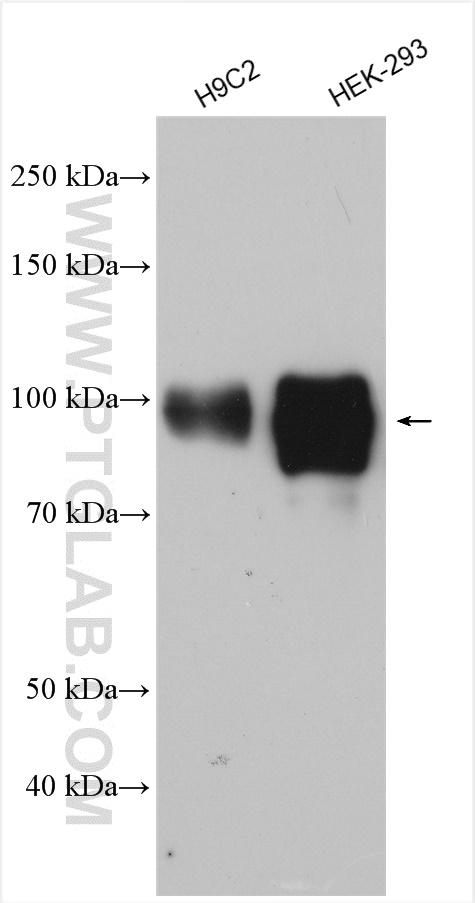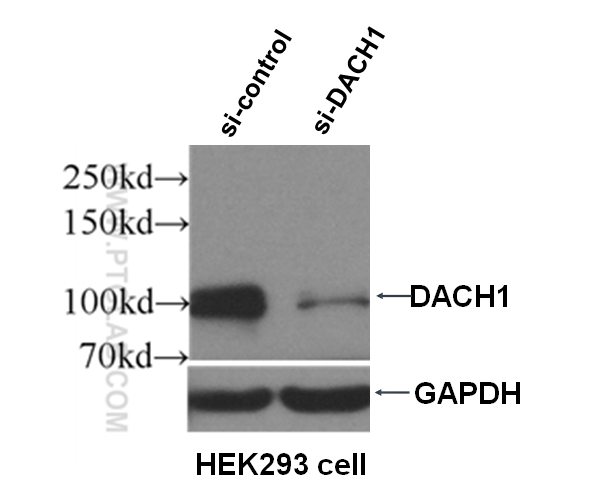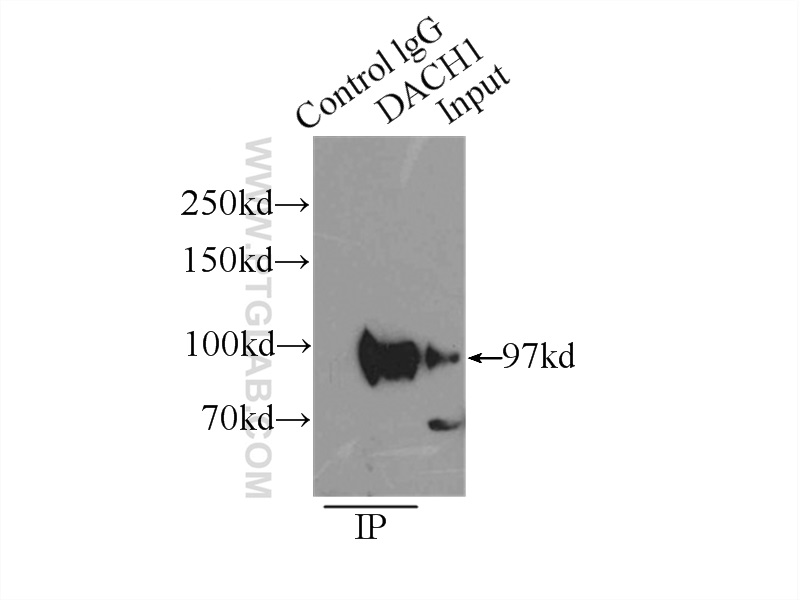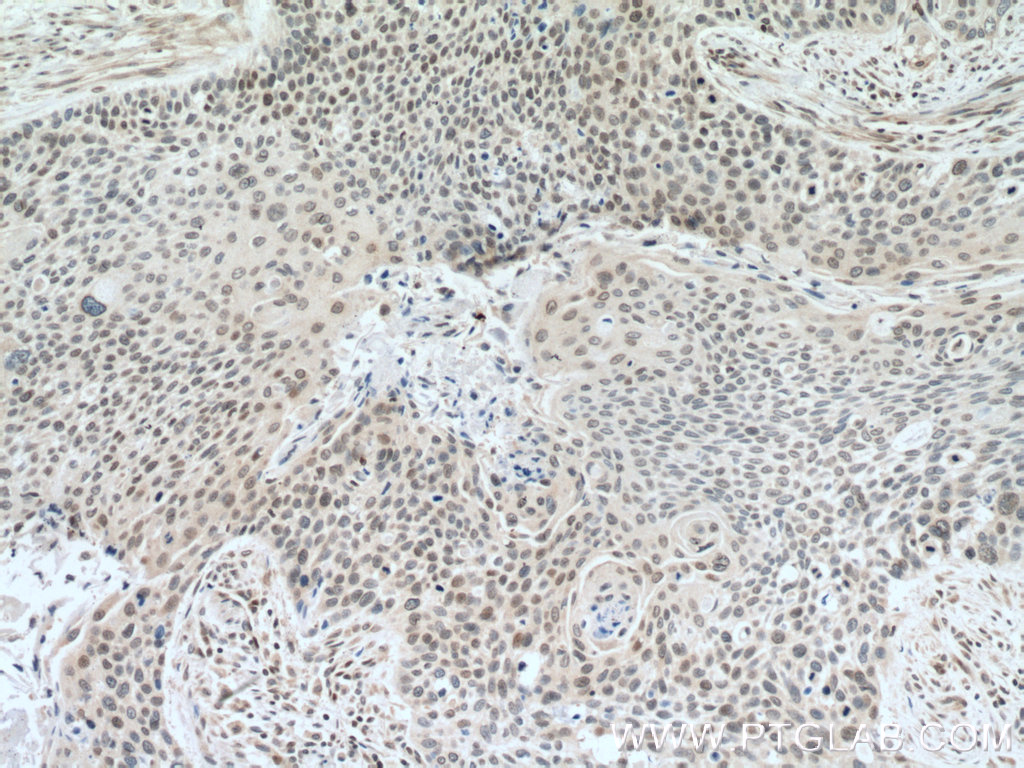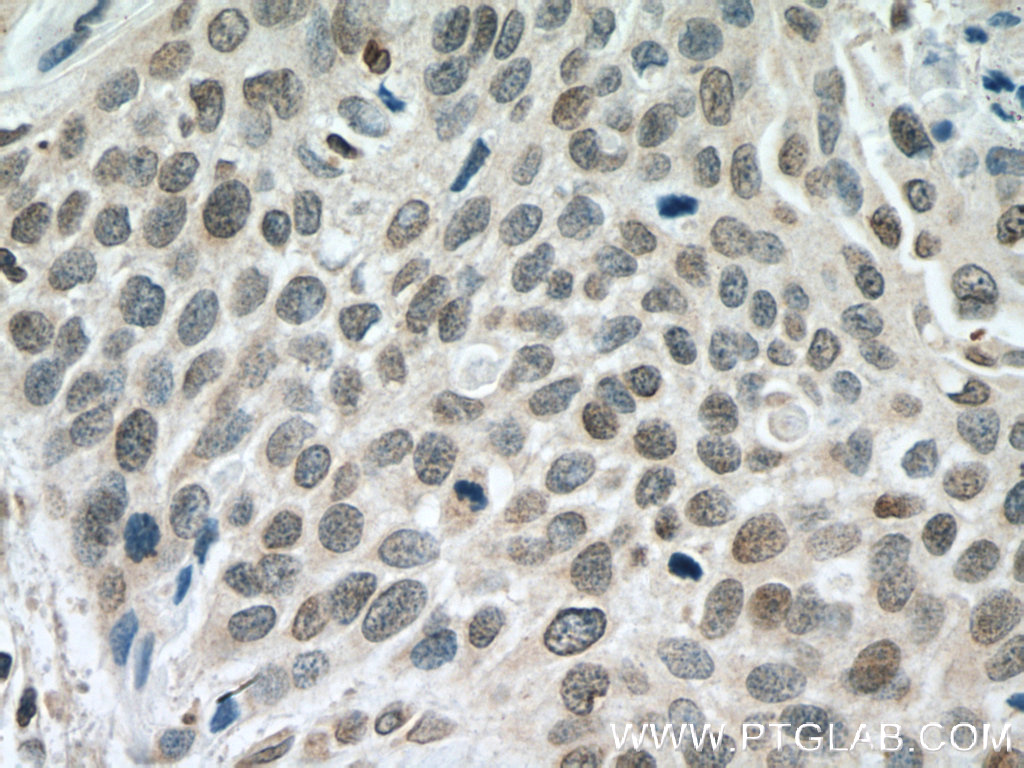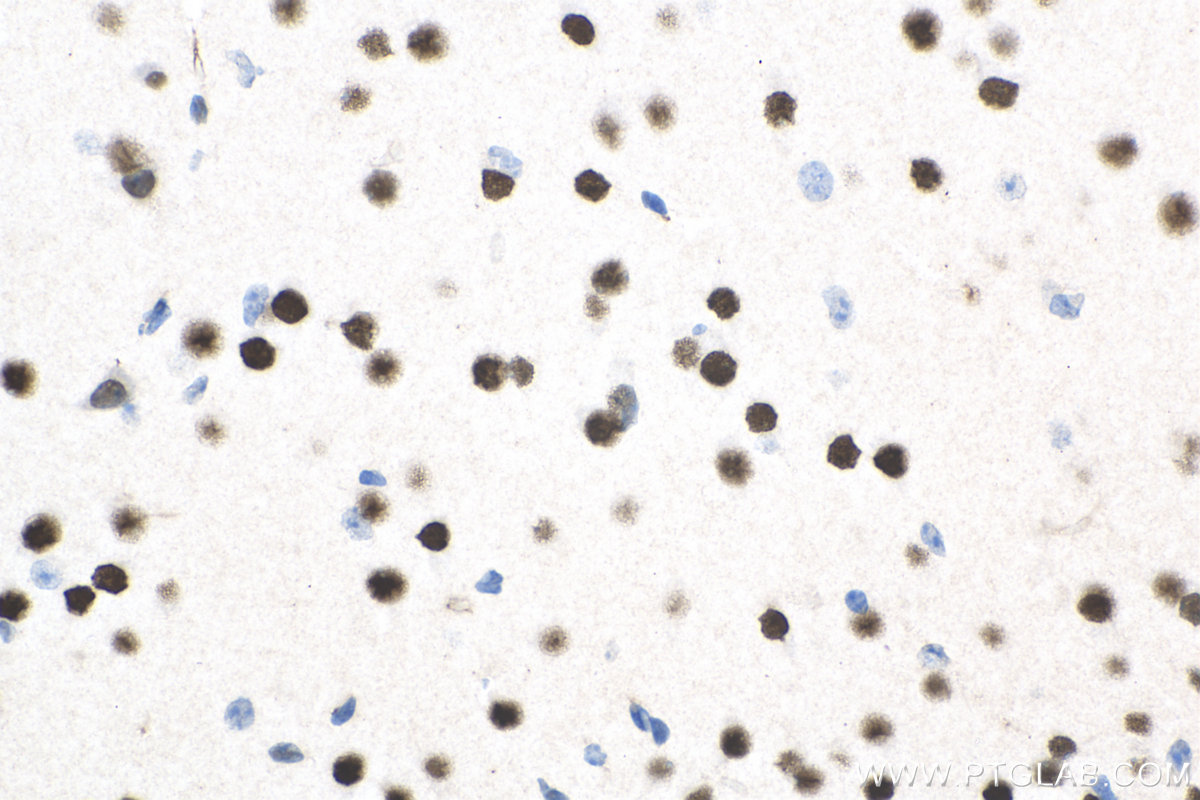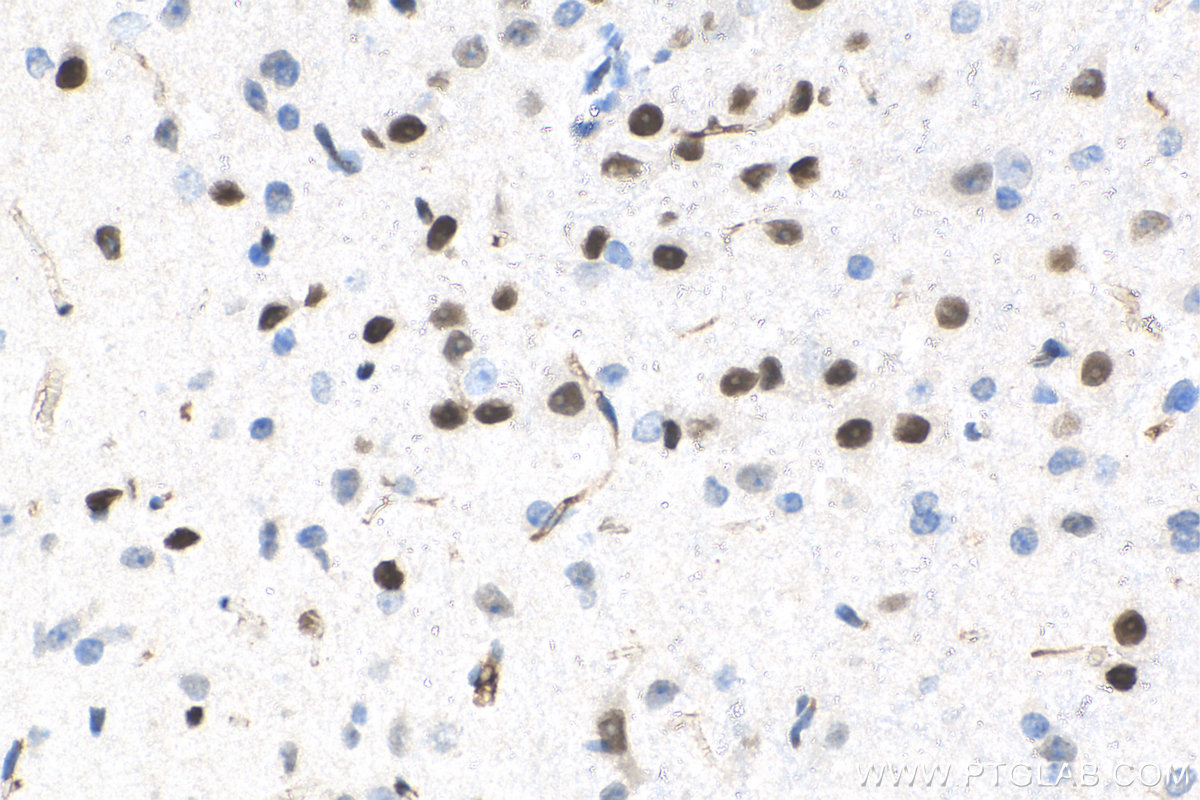验证数据展示
经过测试的应用
| Positive WB detected in | H9C2 cells, HEK-293 cells |
| Positive IP detected in | HEK-293 cells |
| Positive IHC detected in | human oesophagus cancer tissue, mouse brain tissue Note: suggested antigen retrieval with TE buffer pH 9.0; (*) Alternatively, antigen retrieval may be performed with citrate buffer pH 6.0 |
| Positive IF/ICC detected in | HEK-293 cells |
推荐稀释比
| 应用 | 推荐稀释比 |
|---|---|
| Western Blot (WB) | WB : 1:5000-1:50000 |
| Immunoprecipitation (IP) | IP : 0.5-4.0 ug for 1.0-3.0 mg of total protein lysate |
| Immunohistochemistry (IHC) | IHC : 1:50-1:500 |
| Immunofluorescence (IF)/ICC | IF/ICC : 1:200-1:800 |
| It is recommended that this reagent should be titrated in each testing system to obtain optimal results. | |
| Sample-dependent, Check data in validation data gallery. | |
产品信息
10914-1-AP targets DACH1 in WB, IHC, IF/ICC, IP, ChIP, ELISA applications and shows reactivity with human, mouse, rat samples.
| 经测试应用 | WB, IHC, IF/ICC, IP, ELISA Application Description |
| 文献引用应用 | WB, IHC, IF, IP, ChIP |
| 经测试反应性 | human, mouse, rat |
| 文献引用反应性 | human, mouse, rat, pig, zebrafish |
| 免疫原 |
CatNo: Ag1354 Product name: Recombinant human DACH1 protein Source: e coli.-derived, PGEX-4T Tag: GST Domain: 176-521 aa of BC021219 Sequence: QHGADSENGDMNSSVGLELPFMMMPHPLIPVSLPPASVTMAMSQMNHLSTIANMAAAAQVQSPPSRVETSVIKERVPDSPSPAPSLEEGRRPGSHPSSHRSSSVSSSPARTESSSDRIPVHQNGLSMNQMLMGLSPNVLPGPKEGDLAGHDMGHESKRMHIEKDETPLSTPTARDSLDKLSLTGHGQPLPPGFPSPFLFPDGLSSIETLLTNIQGLLKVAIDNARAQEKQVQLEKTELKMDFLRERELRETLEKQLAMEQKNRAIVQKRLKKEKKAKRKLQEALEFETKRREQAEQTLKQAASTDSLRVLNDSLTPEIEADRSGGRTDAERTIQDGRLYLKTTVMY 种属同源性预测 |
| 宿主/亚型 | Rabbit / IgG |
| 抗体类别 | Polyclonal |
| 产品类型 | Antibody |
| 全称 | dachshund homolog 1 (Drosophila) |
| 别名 | DACH, Dachshund-1 |
| 计算分子量 | 79 kDa |
| 观测分子量 | 97-110 kDa |
| GenBank蛋白编号 | BC021219 |
| 基因名称 | DACH1 |
| Gene ID (NCBI) | 1602 |
| RRID | AB_2230330 |
| 偶联类型 | Unconjugated |
| 形式 | Liquid |
| 纯化方式 | Antigen affinity purification |
| UNIPROT ID | Q9UI36 |
| 储存缓冲液 | PBS with 0.02% sodium azide and 50% glycerol, pH 7.3. |
| 储存条件 | Store at -20°C. Stable for one year after shipment. Aliquoting is unnecessary for -20oC storage. |
背景介绍
DACH1, a homologue of the Drosophila dachshund gene, is a key regulator of cell fate determination during eye, leg, and brain development in the fly. Through interacting with NCoR and Smad4, DACH1 is able to inhibit the transforming growth factor-beta (TGF-beta) signaling pathway. DACH1 can inhibit breast cancer cellular proliferation via cyclin D1, suggesting a possible role in tumor suppression. Additionally, DACH1 plays an important role in negative regulation of RANKL (Receptor activator of NF-kappaB ligand ) gene expression in marrow stromal/preosteoblast cells. Dach1 expression is enriched in rECs, which are associated with osteoprogenitors and bone-resorbing osteoclasts, and overexpression of DACH1 in postnatal mice induces a strong increase in arteries and type R capillaries, leading to local metabolic changes and enabling trabecular bone formation in normally highly hypoxic areas of the diaphysis (PMID: 39528700). Moreover, Loss of DACH1 expression might be involved in endometrial cancer progression. Four isoforms of DACH1 are produced by alternative splicing. This antibody is a rabbit polyclonal antibody raised against residues near the C terminus of human DACH1.
实验方案
| Product Specific Protocols | |
|---|---|
| IF protocol for DACH1 antibody 10914-1-AP | Download protocol |
| IHC protocol for DACH1 antibody 10914-1-AP | Download protocol |
| IP protocol for DACH1 antibody 10914-1-AP | Download protocol |
| WB protocol for DACH1 antibody 10914-1-AP | Download protocol |
| Standard Protocols | |
|---|---|
| Click here to view our Standard Protocols |
发表文章
| Species | Application | Title |
|---|---|---|
Nature Excitation-induced ataxin-3 aggregation in neurons from patients with Machado-Joseph disease. | ||
Cell Stem Cell Human iPSC-Derived Neural Progenitors Are an Effective Drug Discovery Model for Neurological mtDNA Disorders. | ||
Nat Cell Biol A single-cell transcriptional roadmap for cardiopharyngeal fate diversification. | ||
Nat Neurosci Auto-attraction of neural precursors and their neuronal progeny impairs neuronal migration. |

